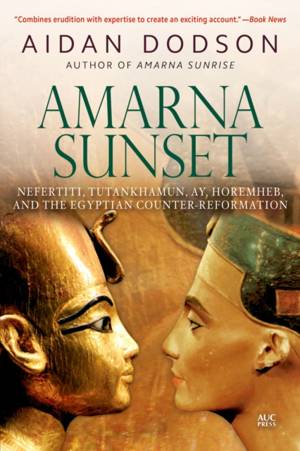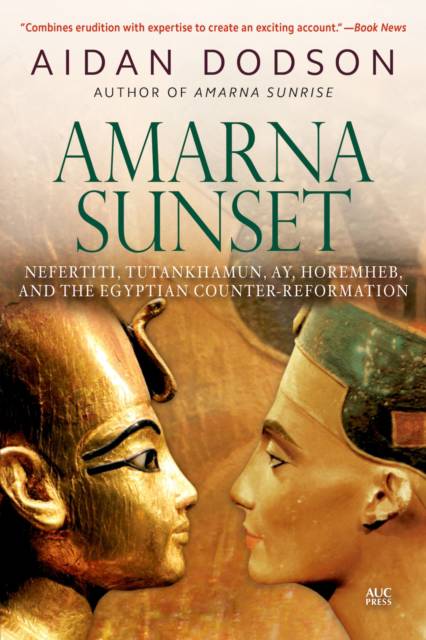
- Retrait gratuit dans votre magasin Club
- 7.000.000 titres dans notre catalogue
- Payer en toute sécurité
- Toujours un magasin près de chez vous
- Retrait gratuit dans votre magasin Club
- 7.000.0000 titres dans notre catalogue
- Payer en toute sécurité
- Toujours un magasin près de chez vous
Amarna Sunset
Nefertiti, Tutankhamun, Ay, Horemheb, and the Egyptian Counter-Reformation
Aidan Dodson
Livre broché | Anglais
22,95 €
+ 45 points
Format
Description
A new account of the return to orthodoxy after Akhenaten's revolution which "combines erudition with expertise to create an exciting account of a much mythologized period" (Book News, ) now in a fully revised paperback
Amarna Sunset tells the story of the decline and fall of the pharaoh Akhenaten's religious revolution in the fourteenth century bc. Beginning at the regime's high point in his Year 12, it traces the subsequent collapse that saw the deaths of many of the king's loved ones, his attempts to guarantee the revolution through co-rulers, and the last frenzied assault on the god Amun. The book then outlines the events of the subsequent five decades that saw the extinction of the royal line, an attempt to place a foreigner on Egypt's throne, and the accession of three army officers in turn. Among its conclusions are that the mother of Tutankhamun was none other than Nefertiti, and that the queen was joint-pharaoh in turn with both her husband Akhenaten and her son. As such, she was herself instrumental in beginning the return to orthodoxy, undoing her erstwhile husband's life-work before her own mysterious disappearance. This fully updated and extensively revised paperback edition addresses new evidence and discussions that have appeared in the decade since the book was originally published. Amarna Sunset, together with its recently updated companion volume, Amarna Sunrise, accordingly provides readers with a comprehensive, up-to-date overview of Egyptian history during the golden years of the Late Bronze Age in the Eastern Mediterranean and the Near East.Spécifications
Parties prenantes
- Auteur(s) :
- Editeur:
Contenu
- Nombre de pages :
- 232
- Langue:
- Anglais
Caractéristiques
- EAN:
- 9789774168598
- Date de parution :
- 20-05-18
- Format:
- Livre broché
- Format numérique:
- Trade paperback (VS)
- Dimensions :
- 155 mm x 226 mm
- Poids :
- 408 g

Les avis
Nous publions uniquement les avis qui respectent les conditions requises. Consultez nos conditions pour les avis.






